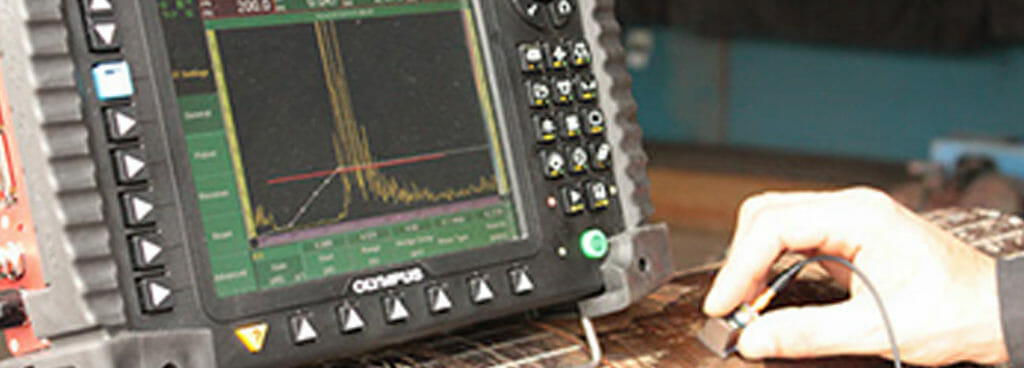How Welding Inspection Racine Guarantees Safety And Security and Conformity
How Welding Inspection Racine Guarantees Safety And Security and Conformity
Blog Article
Ingenious Techniques to Fillet Weld Examination and Screening: Enhancing Weld High Quality and Compliance Criteria
In the realm of welding, the quality and honesty of fillet welds play a critical role in guaranteeing the structural sturdiness and dependability of different industrial parts. With the consistent drive for boosted performance and compliance with stringent standards, the expedition of cutting-edge techniques to fillet weld assessment and screening has become crucial. As markets develop, the typical approaches may no more be sufficient in meeting the demands of contemporary welding applications. By accepting cutting-edge technologies and approaches, a new horizon of possibilities arises in the realm of weld quality evaluation and adherence to conformity requirements.
Advanced Non-Destructive Screening Methods
Using state-of-the-art innovations, advanced non-destructive testing approaches play an important duty in guaranteeing the honesty and quality of fillet welds. These techniques, such as phased array ultrasonic testing (PAUT) and magnetic fragment testing (MPT), offer in-depth insights into the weld's interior framework without causing any type of damages to the product. PAUT, for instance, uses numerous ultrasonic elements to examine the weld from numerous angles, providing a detailed visualization of possible defects like lack of combination or splits.
In A Similar Way, MPT is effective in finding surface-breaking issues by applying an electromagnetic field and iron bits to the weld location. This approach is particularly helpful for determining stoppages that might compromise the weld's strength. By employing these sophisticated non-destructive testing strategies, weld assessors can accurately assess the quality of fillet welds, guaranteeing compliance with market requirements and guidelines. The capability to find imperfections early on not only boosts weld quality but also prevents pricey rework or failings in architectural stability, highlighting the relevance of these ingenious testing techniques in welding examinations.
Robotics and Automation in Examination
The combination of robotics and automation has actually transformed the inspection procedure for fillet welds, boosting performance and precision in quality analysis. Robotics provide precise control and repeatability in evaluating welds, guaranteeing reputable and consistent outcomes. Automated systems can be programmed to comply with specific assessment paths, making sure comprehensive insurance coverage of welds and lowering the risk of human mistake.
Robot evaluation systems outfitted with advanced sensing units can detect and determine weld attributes with high precision, supplying detailed information for analysis. These systems can recognize defects such as fractures, absence of fusion, and porosity, allowing punctual rehabilitative actions to be taken. Furthermore, robotics and automation permit real-time data collection and evaluation, giving immediate comments to drivers and facilitating quick decision-making procedures.
In addition, making use of robotics and automation in fillet weld evaluation enhances total performance by reducing evaluation times and enhancing assessment throughput. By simplifying the examination process, producers can guarantee weld high quality and conformity criteria are fulfilled successfully, inevitably leading to cost savings and enhanced product quality.
Utilizing Expert System for Analysis
Expert system plays a pivotal role in enhancing the efficiency and precision of evaluation in fillet weld examination procedures. By taking advantage of the power of AI, assessors can simplify the evaluation of weld high quality and compliance standards, causing much more reputable and accurate results. AI formulas can quickly process vast quantities of information from weld assessments, discovering problems or inconsistencies that might be challenging to relate to the nude eye. This sophisticated technology enables real-time surveillance of weld high quality, enabling immediate rehabilitative activities to be taken if any kind of concerns are identified.
In addition, AI systems can gain from past inspection information, constantly improving their capacity to recognize possible defects and variances in fillet welds. This adaptive understanding capacity improves the overall quality assurance process, reducing the probability of human mistake and making certain that welds meet the called for standards. By navigate here integrating expert system right into fillet weld evaluation, sectors can achieve higher levels of efficiency, consistency, and compliance in their assessment methods.
Portable Tools for On-Site Examination
 Enhancing field assessment performance, the adoption of portable tools transforms on-site evaluation procedures for fillet welds. These devices supply flexibility and convenience, enabling examiners to carry out detailed evaluations in numerous areas, consisting of remote or challenging environments. Portable tools such as ultrasonic testing gadgets, magnetic fragment inspection devices, and electronic radiography systems provide real-time information and high-resolution imaging abilities, allowing quick decision-making and immediate comments on weld quality.
Enhancing field assessment performance, the adoption of portable tools transforms on-site evaluation procedures for fillet welds. These devices supply flexibility and convenience, enabling examiners to carry out detailed evaluations in numerous areas, consisting of remote or challenging environments. Portable tools such as ultrasonic testing gadgets, magnetic fragment inspection devices, and electronic radiography systems provide real-time information and high-resolution imaging abilities, allowing quick decision-making and immediate comments on weld quality.One significant benefit of mobile devices is their ability to streamline inspection treatments, lowering downtime and boosting general efficiency. Examiners can easily transfer these tools to various work websites, getting rid of the need for transferring heavy equipment or elements to off-site facilities. Additionally, the portability of these devices advertises cost-effectiveness by reducing transportation expenditures and speeding up assessment timelines.
Additionally, the use of portable devices for on-site evaluation promotes aggressive high quality control steps, as inspectors can without delay recognize and deal with any possible welding flaws or discrepancies. By including these innovative modern technologies into on-site examination techniques, welding experts can ensure conformity with industry criteria and improve weld quality, inevitably resulting in improved structural integrity and security in various welding applications.
Assimilation of Data Monitoring Systems
Having actually enhanced on-site examination processes via the use of portable devices, the following phase includes the seamless assimilation of data administration systems to further boost efficiency and information evaluation capabilities in fillet weld assessment and screening. Welding Inspection Racine. By integrating data management systems into the examination process, organizations can improve information collection, storage space, and evaluation. This integration enables real-time monitoring you can check here of weld high quality, prompt recognition Visit Website of defects, and timely decision-making to remedy any kind of concerns that might occur throughout the assessment process
The assimilation of data monitoring systems allows smooth communication in between different stakeholders entailed in the assessment process, fostering collaboration and boosting overall top quality control steps. Inevitably, the assimilation of data administration systems offers to raise the criteria of fillet weld evaluation and screening, ensuring conformity with market guidelines and boosting weld quality.
Final Thought
Finally, ingenious strategies to fillet weld evaluation and screening have actually considerably boosted weld quality and compliance standards. Advanced non-destructive testing techniques, robotics, automation, expert system, portable devices, and information management systems have changed the means weld evaluations are carried out. By making use of these modern technologies, industries can make certain that welds satisfy the needed top quality criteria and regulations, inevitably improving overall efficiency and security in welding processes.

By utilizing these sophisticated non-destructive screening techniques, weld inspectors can properly assess the quality of fillet welds, ensuring conformity with sector criteria and laws. Mobile devices such as ultrasonic screening gadgets, magnetic fragment inspection devices, and electronic radiography systems give real-time information and high-resolution imaging abilities, allowing quick decision-making and instant feedback on weld quality.
Having actually maximized on-site inspection processes with the usage of mobile devices, the next phase entails the smooth combination of data monitoring systems to additionally improve efficiency and information analysis abilities in fillet weld assessment and screening (Welding Inspection Racine). Eventually, the integration of data monitoring systems serves to elevate the standards of fillet weld examination and testing, ensuring compliance with industry policies and enhancing weld quality
 In final thought, innovative strategies to fillet weld examination and screening have significantly improved weld top quality and conformity standards.
In final thought, innovative strategies to fillet weld examination and screening have significantly improved weld top quality and conformity standards.Report this page